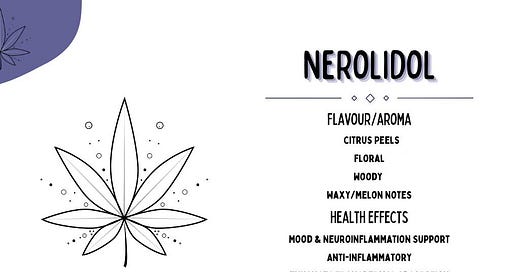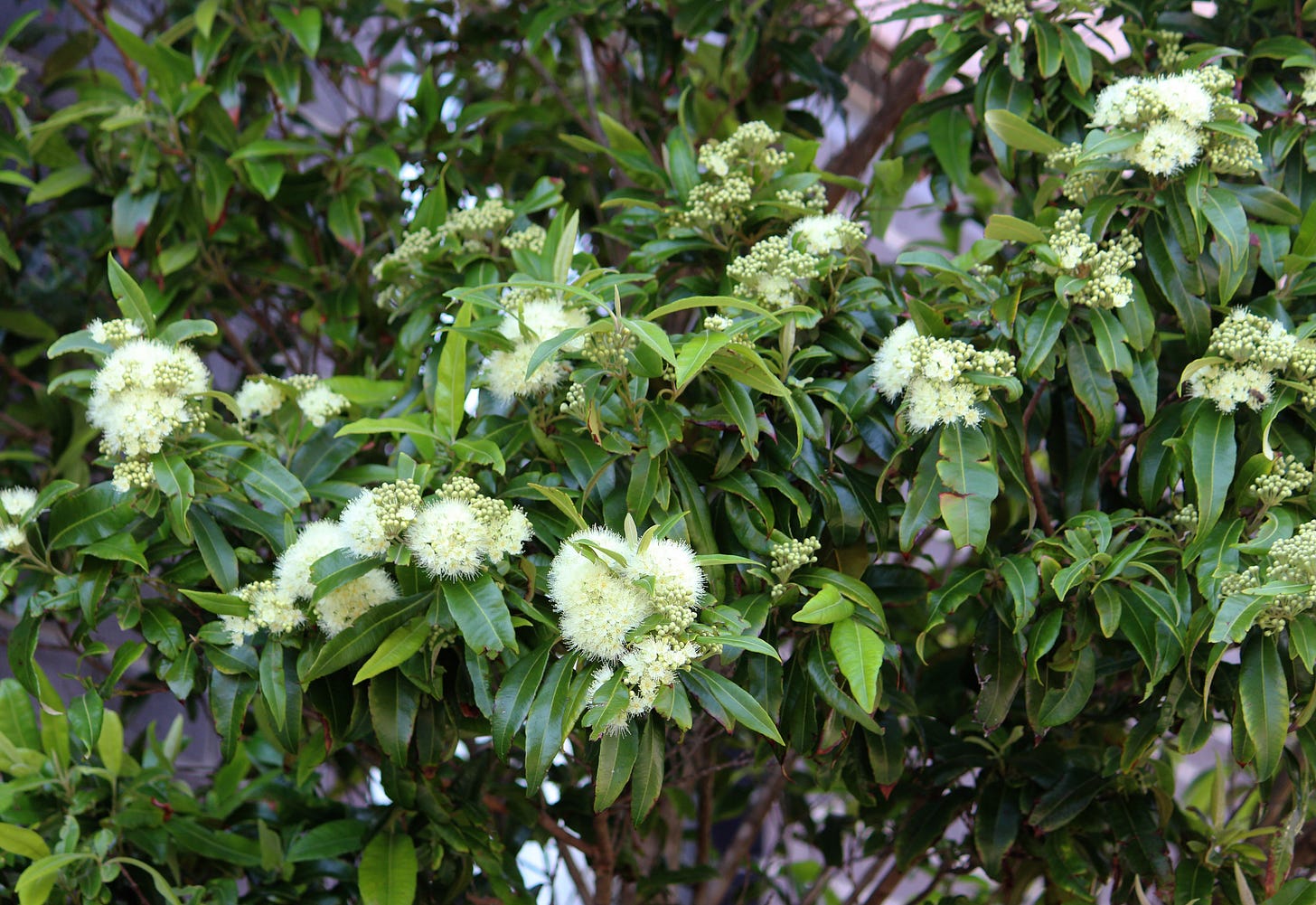Terpene of the Month: Nerolidol | AusCannaReviews
This month, we’re doing a deep dive into the terpene Nerolidol.
Nerolidol is a naturally occurring terpene found in a wide range of plants, including ginger, jasmine, lemongrass, lavender, tea tree, and oranges, as well as in cannabis. It’s known for its distinctive aroma, a soft blend of woody, floral, and citrusy notes, with subtle hints of green, waxy bark, and melon.
There are two Nerolidol isomers, trans-nerolidol and cis-nerolidol, both of which are sesquiterpenes. These heavier-weight molecules don’t evaporate as easily as monoterpenes like Limonene or Pinene, which may explain why Nerolidol tends to linger and support slower, longer-acting effects.
In Australia, Nerolidol has likely played a quiet role in traditional medicine for thousands of years, carried through plants long used by Aboriginal communities. Melaleuca alternifolia (tea tree) and Backhousia citriodora (lemon myrtle) both contain Nerolidol and have a strong history of therapeutic use. Tea tree leaves were crushed and applied to wounds or inhaled to relieve coughs and congestion, while Lemon Myrtle was used as a calming, cleansing remedy.
In Ayurvedic and Traditional Chinese Medicine, Nerolidol-rich plants like ginger, jasmine, and lemongrass have long been valued for their calming, warming, and antimicrobial properties. Jasmine was often used in teas or oils for stress and sleep, while lemongrass was brewed to support immune and gut health.
While traditional uses were grounded in lived experience and careful observation, modern science is now beginning to explain how and why these remedies worked. In recent years, Nerolidol has attracted growing interest in both clinical and preclinical studies for its wide-ranging therapeutic potential.
A May 2024 study published in NeuroReport found that nerolidol reduced depression-like behaviour in chronically stressed mice by calming overactive microglial cells and downregulating DNMT1, a gene-related enzyme linked to stress and inflammation. These findings suggest Nerolidol may help regulate mood by addressing both neurological and inflammatory pathways. While further research is required, these findings suggest that Nerolidol may have the potential to support the management of mental health conditions such as anxiety, low mood, stress-related sleep disturbances, and neuroinflammatory disorders, including PTSD and chronic fatigue syndrome.
A 2022 study published in Plants as part of the Medicinal Chemistry of Aromatic Plants collection examined Nerolidol-rich essential oils from black poplar buds and propolis, a resinous beehive product that is collected by bees from plant exudates and is used to protect and maintain hive homeostasis. When tested on human immune cells known as neutrophils, Nerolidol initially activated the cells but subsequently reduced their responsiveness to inflammatory signals. This dual action suggests Nerolidol may help modulate immune activity and reduce inflammation by downregulating overactive immune responses. While further investigation is needed, these findings point to the potential role of Nerolidol in supporting the management of inflammation-related conditions.

A study published in the Journal of Pharmacy and Pharmacology in 1994 investigated 12 natural sesquiterpene compounds. Out of the 12, they identified that Nerolidol was the most effective at enhancing the absorption of a test drug through human skin, increasing delivery by over 20-fold. This effect is thought to result from Nerolidol’s ability to integrate into the skin’s outer layer, improving the movement of molecules across the barrier. Notably, the enhanced absorption persisted for several days and was not easily reversed, suggesting the potential for long-lasting topical treatments. While further research is needed, these findings indicate that Nerolidol may offer a safe and effective option to support transdermal drug delivery.
A 2005 study published in Antimicrobial Agents and Chemotherapy investigated the effects of Nerolidol against Leishmania parasites, which cause a serious tropical disease. In laboratory tests, Nerolidol inhibited parasite growth and reduced infection levels in immune cells by interfering with a critical biochemical pathway the parasite relies on to survive. When infected mice were treated with Nerolidol, lesion sizes decreased, although it should be noted that the infection was not fully eliminated. While further research is necessary, these findings suggest Nerolidol may have the potential as a supportive treatment in managing parasitic infections.

Nerolidol isn’t a dominant terpene in cannabis and usually appears alongside Myrcene, Linalool, and Caryophyllene. Though often present in microdoses and subtle on its own, it can contribute meaningfully to the Entourage Effect. Whether through vapour, topicals, or infused oils, Nerolidol shows that the quietest ingredients can have a lasting impact.
This Substack aims to provide anecdotal information from my personal experiences in hopes it will lead to meaningful conversations between my readers and their healthcare professionals about medicinal cannabis.
I have no formal training in medicine or science. This article does not constitute medical advice.
🎤 This platform runs on curiosity, honesty, and community. If you're still reading, you're probably part of that. Thanks, truly! ☕️







